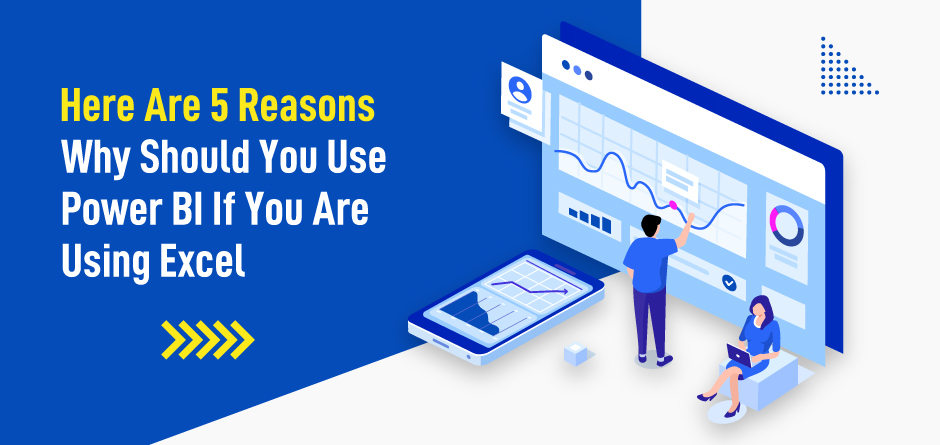
5 Key Points to Consider for Success in the Cloud with Snowflake in Azure
Microsoft Excel is the go-to platform for most organizations when it comes to forecasting and financial modeling. It is a potent tool with interactive dashboards, graphing tools, and a macros programming language. It has data connection features that can extract data from extraneous sources like the Web, O Data Feed, SharePoint List, Microsoft Query and more.
Microsoft Power BI, on the other hand, is the new age analytics tool that is far sleeker, with the ability to get answers on the fly with visualization, calculations across datasets, and statistical functions. Let’s dive deeper into why you should use PowerBI as your analytics tool.
-
Store and Access a Large Amount of Data
Imagine having all your files neatly compressed and organized for you to view, connect, and analyze. Power BI is phenomenal when it comes to compressing Excel and text/.csv files. Thanks to this, you can visualize large amounts of data, using only 50 mb, which cannot be done in Excel. All the granular details exist in one file and are accessed via drill downs.
Power BI has abilities like making edits; for instance, changing formats, removing and adding rows and columns, transposing data and more. Adding relationships with tables is useful if you have a Snowflake schema.
Repetitive work is reduced or done away with since PowerBI remembers the data preparation steps and repeats them automatically when the data refreshes.
-
Identify Data Trends Quickly
It’s super easy to analyze trends on Power BI. Its built-in time-intelligence features only take seconds to view a large amount of data by multiple dimensions like date and time and many other attributes.
To let the time-intelligence functions work, you can easily create the date dimension table within seconds, if you don’t have it in your schema structure. Business executives generally spend hours getting comparisons in a time series using excel macros.
-
Intuitive UX Features
Power BI makes everything look simple, neat, and visually appealing without the need to have any heavy creativity or UX skills. Its drag and drop functionality, copy-pasting and resizing makes anyone who is used to MS Office feel really comfortable using Power BI.
Making branding and color schemes that are consistent is pretty convenient with Power BI schemes. Any company’s branding department can create a simple Power BI theme as a .json file, and every analyst has to just import the theme during development. There onwards, they can create consistent coloured graphs and charts.
A theme is just a .json file with multiple colours in HEX format. The theme can be created or changed in a notepad file. Through the themes tab, the .json file can be imported.
-
Powerful Cloud-based Features
You can publish your Power BI analysis through Microsoft’s cloud service called Power BI Service. This service lets your Power BI analysis get refreshed automatically by simply hitting the publish button on the top right corner of the Power BI home ribbon.
This process would typically be quite hectic on Excel for it would involve emailing a large file, sharing it on Drive or a SharePoint portal and letting people know when it’s updated. Power BI changes everything.
Besides this, Power BI Service has a few valuable tools that can be used once you publish on the cloud like Quick Insights, Natural Language Query, Personalized Dashboards, and personalized dashboards.
-
Row Level Security
Row Level Security is a commonly used feature even on Excel and can be done even by non-coders. An example of this would be giving file access only to those employees who are meant to view it while sharing it on mail.
On Power BI, it is just as simple. Select “Manage Roles” under the Security tab of the Modeling ribbon. You can then create roles for various groups with DAX expression filters.
Conclusion
Power BI is a potent tool that helps businesses launch a data driven culture. It has phenomenal self-service capabilities and makes business users independent of IT to collect, transform and analyze data. Automation, integration, scalability, visualization and Row Level Security are only a few reasons why Power BI stands out as a Business Intelligence tool. For more information on its capabilities, go to https://omnepresent.com/business-intelligence/
RECENT POSTS
CATEGORIES
